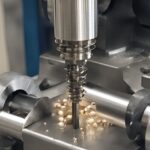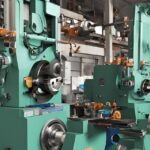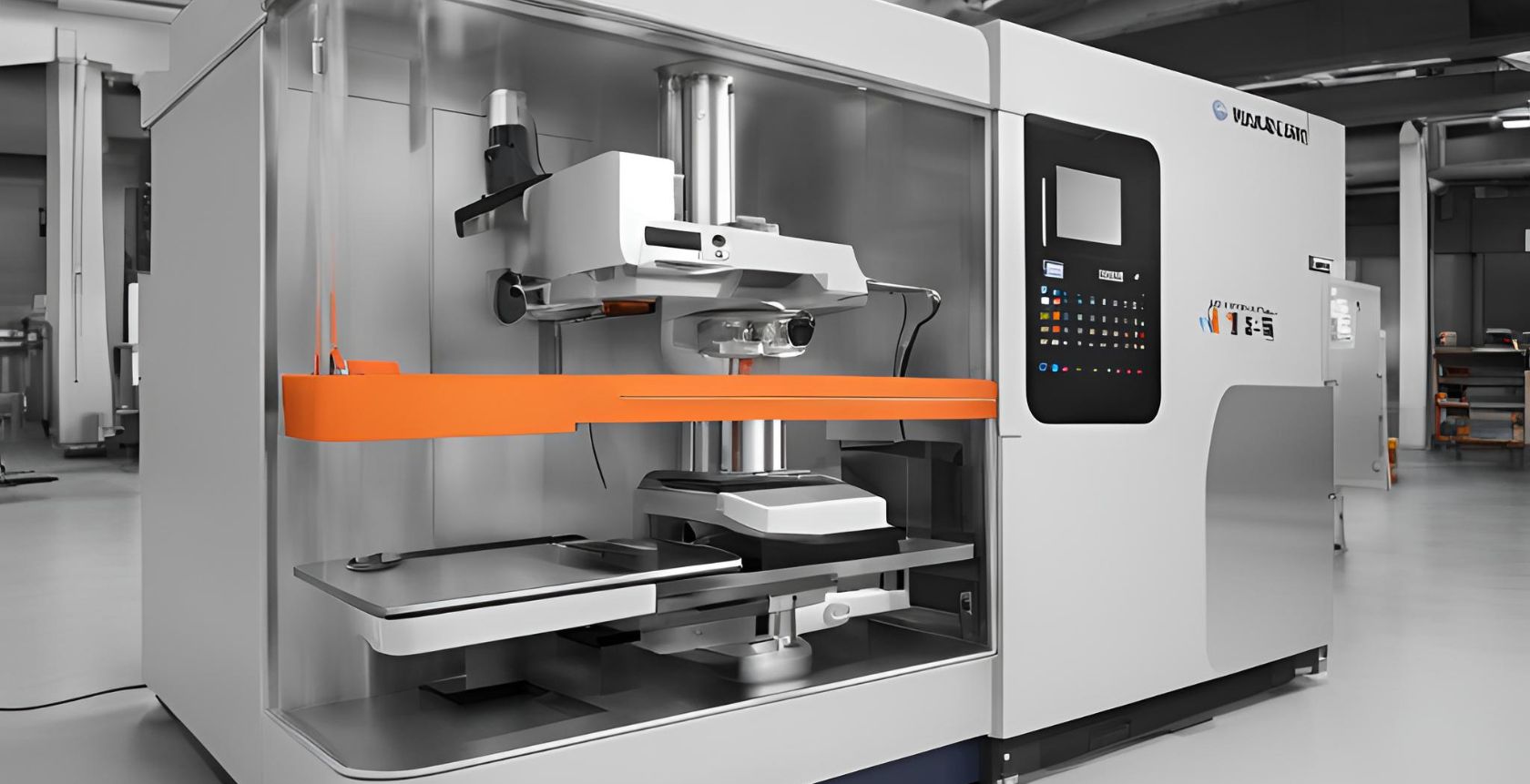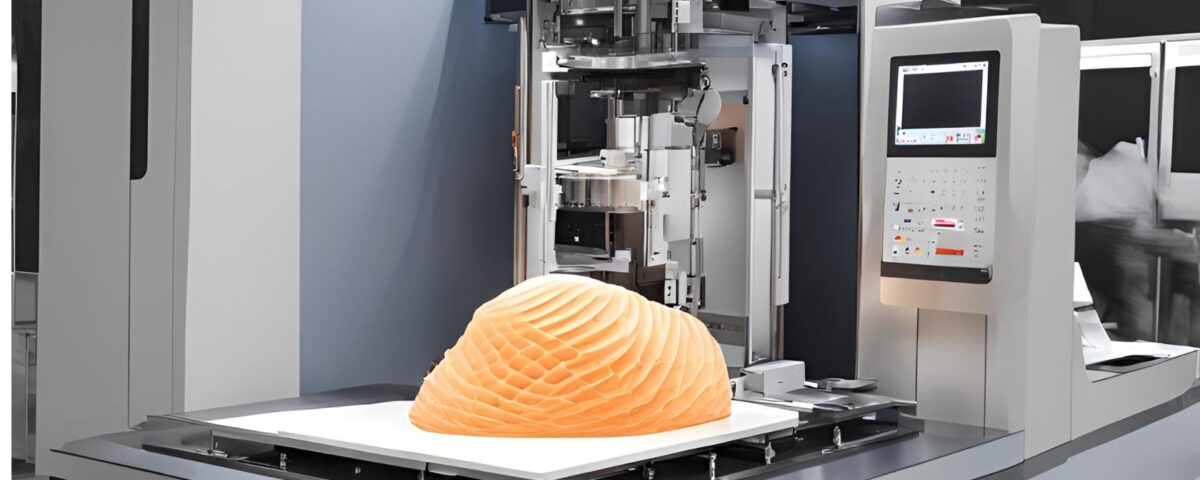
A Deep Dive into Screw Machining Techniques
17 May 2024
Diverse Bearings: Exploring the Features, Differences, and Applications of 14 Types
24 May 2024The Power of Rapid CNC Prototyping
In today's fast-paced manufacturing landscape, the ability to quickly transform ideas into tangible products is crucial for maintaining a competitive edge. Rapid CNC prototyping has emerged as a powerful tool in this regard, enabling businesses to swiftly and efficiently create prototypes for a wide range of applications. This technology, which leverages advanced computer numerical control (CNC) machining, has revolutionized the way industries approach product development, testing, and production. This essay delves into the multifaceted advantages of rapid CNC prototyping, examining its impact on innovation, cost-efficiency, time-to-market, and overall product quality.
Innovation and Design Flexibility
One of the primary benefits of rapid CNC prototyping is its ability to foster innovation. By allowing designers and engineers to quickly produce and iterate on physical models, CNC prototyping facilitates a more dynamic and responsive design process. This is particularly valuable in industries where the ability to experiment with different design concepts can lead to groundbreaking advancements.
With rapid CNC prototyping, designers can easily modify digital models and produce new iterations without the need for extensive retooling or setup changes. This flexibility enables a more experimental approach to product development, where multiple design variations can be tested and refined in a short period. As a result, companies can explore a broader range of design possibilities, ultimately leading to more innovative and optimized products.
Speed and Efficiency
The speed at which prototypes can be produced using CNC machining is a critical advantage in the modern manufacturing environment. Traditional prototyping methods, such as manual machining or casting, can be time-consuming and labor-intensive, often taking weeks or even months to produce a single prototype. In contrast, rapid CNC prototyping can produce complex parts in a matter of hours or days, significantly reducing the time required to move from concept to prototype.
This acceleration in the prototyping process has profound implications for product development cycles. By shortening the time needed to create and test prototypes, companies can bring new products to market faster, gaining a competitive edge over rivals. This is particularly important in industries where product lifecycles are short, and the ability to quickly respond to market demands is crucial for success.

Cost-Effectiveness
Cost efficiency is another major advantage of rapid CNC prototyping. Traditional prototyping methods often involve significant upfront costs for tooling and setup, which can be prohibitive, especially for small and medium-sized enterprises. In contrast, CNC prototyping requires minimal setup, as the same machine can be used to produce a wide variety of parts with only minor adjustments to the digital model.
This reduction in setup costs makes rapid CNC prototyping an economical choice for producing small batches of prototypes or even custom one-off parts. Additionally, the ability to quickly produce and test multiple design iterations helps identify and address potential issues early in the development process, reducing the risk of costly design flaws and production delays down the line.
Precision and Accuracy
CNC machining is renowned for its precision and accuracy, making it an ideal choice for prototyping applications where tight tolerances are required. The high level of control offered by CNC machines ensures that prototypes are produced to exact specifications, providing a reliable basis for testing and validation.
This precision is particularly important in industries such as aerospace, medical devices, and automotive manufacturing, where even minor deviations from design specifications can have significant implications for performance and safety. By producing highly accurate prototypes, CNC machining helps ensure that the final product meets all necessary standards and requirements, reducing the risk of costly recalls or failures.

Material Versatility
Rapid CNC prototyping is compatible with a wide range of materials, including metals, plastics, and composites. This versatility allows companies to produce prototypes that closely mimic the properties of the final product, providing more accurate and meaningful testing results.
For example, in the aerospace industry, where lightweight and durable materials are essential, CNC prototyping can be used to create prototypes from advanced composites such as carbon fiber or titanium. Similarly, in the medical field, where biocompatibility and sterilization are critical, CNC machines can produce prototypes from medical-grade plastics and metals. This material versatility ensures that prototypes not only meet the design specifications but also perform as expected under real-world conditions.
Enhancing Collaboration and Communication
Rapid CNC prototyping also enhances collaboration and communication within product development teams and with external stakeholders. The ability to quickly produce physical prototypes enables more effective communication of design concepts and ideas, as stakeholders can see and interact with a tangible representation of the product.
This is particularly valuable in collaborative environments where input from multiple departments, such as engineering, marketing, and manufacturing, is required. Physical prototypes can serve as a focal point for discussions, helping to ensure that all stakeholders are aligned and that any potential issues are identified and addressed early in the development process. Additionally, having a physical prototype to present to clients or investors can be a powerful tool for securing buy-in and support for new product initiatives.
Iterative Testing and Refinement
The iterative nature of rapid CNC prototyping allows for continuous testing and refinement of designs. By producing multiple iterations of a prototype, companies can conduct thorough testing to identify any potential issues or areas for improvement. This iterative process helps ensure that the final product is as optimized as possible before it moves into full-scale production.
For example, in the automotive industry, rapid CNC prototyping can be used to create and test multiple iterations of a new engine component. Each iteration can be subjected to rigorous testing to evaluate its performance, durability, and compatibility with other components. Any issues identified during testing can be addressed in subsequent iterations, leading to a final design that is robust, reliable, and optimized for performance.
Supporting Customization and Personalization
The flexibility and precision of rapid CNC prototyping also make it an ideal tool for supporting customization and personalization. In today's market, there is a growing demand for products that can be tailored to meet the specific needs and preferences of individual customers. Rapid CNC prototyping allows companies to quickly and efficiently produce custom prototypes and small batches of personalized products, meeting this demand without the need for extensive retooling or setup.
For example, in the medical field, CNC prototyping can be used to create custom prosthetics and implants that are tailored to the unique anatomy of individual patients. In the consumer electronics industry, CNC prototyping can support the creation of personalized accessories and components, allowing companies to offer a more bespoke product experience. This ability to support customization and personalization helps companies differentiate their products and meet the evolving needs of their customers.
Enabling Digital Manufacturing Workflows
Rapid CNC prototyping is a key enabler of digital manufacturing workflows, which leverage advanced technologies such as 3D modeling, computer-aided design (CAD), and computer-aided manufacturing (CAM) to streamline the product development process. By integrating CNC prototyping into these digital workflows, companies can create a seamless and efficient development process that reduces the need for manual intervention and minimizes the risk of errors.
For example, a designer can create a digital model of a new product in CAD software and then use CAM software to generate the toolpaths and instructions needed for CNC machining. This digital workflow ensures that the design intent is accurately translated into the physical prototype, reducing the risk of errors and inconsistencies. Additionally, the integration of CNC prototyping into digital workflows enables greater automation and efficiency, helping to reduce lead times and costs.
Supporting Sustainability and Waste Reduction
Rapid CNC prototyping also supports sustainability and waste reduction in manufacturing. Traditional prototyping methods can be wasteful, often involving the creation of molds or tooling that are discarded after use. In contrast, CNC prototyping uses a subtractive manufacturing process, where material is removed from a solid block to create the desired shape. This process is inherently more efficient, as it minimizes the amount of material waste.
Additionally, the ability to quickly produce and test multiple design iterations helps identify and address potential issues early in the development process, reducing the risk of costly design flaws and production delays. This iterative process not only improves the overall quality of the final product but also helps reduce waste and inefficiencies throughout the development cycle.
Conclusion
The power of rapid CNC prototyping lies in its ability to transform the product development process, enabling companies to innovate, iterate, and bring new products to market more quickly and efficiently. By leveraging the precision, speed, and flexibility of CNC machining, businesses can reduce costs, improve product quality, and gain a competitive edge in the marketplace. As industries continue to evolve and demand for customized, high-quality products grows, the importance of rapid CNC prototyping will only increase, solidifying its role as a critical tool in modern manufacturing.




